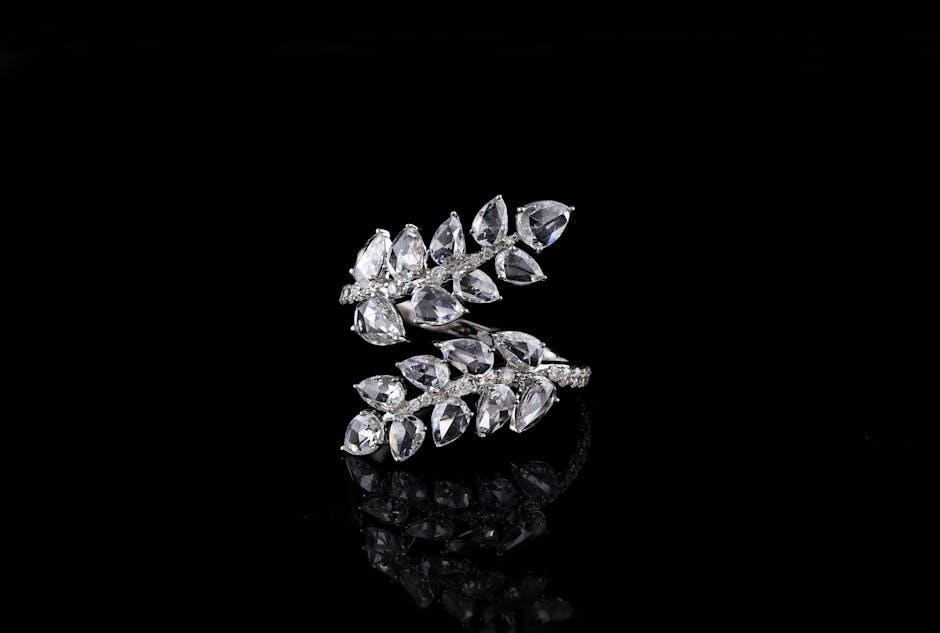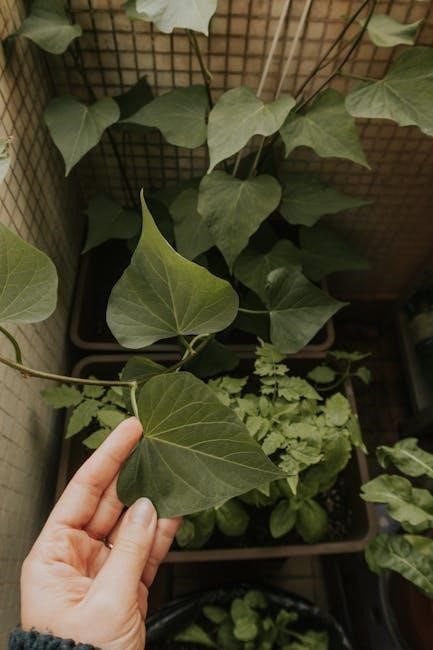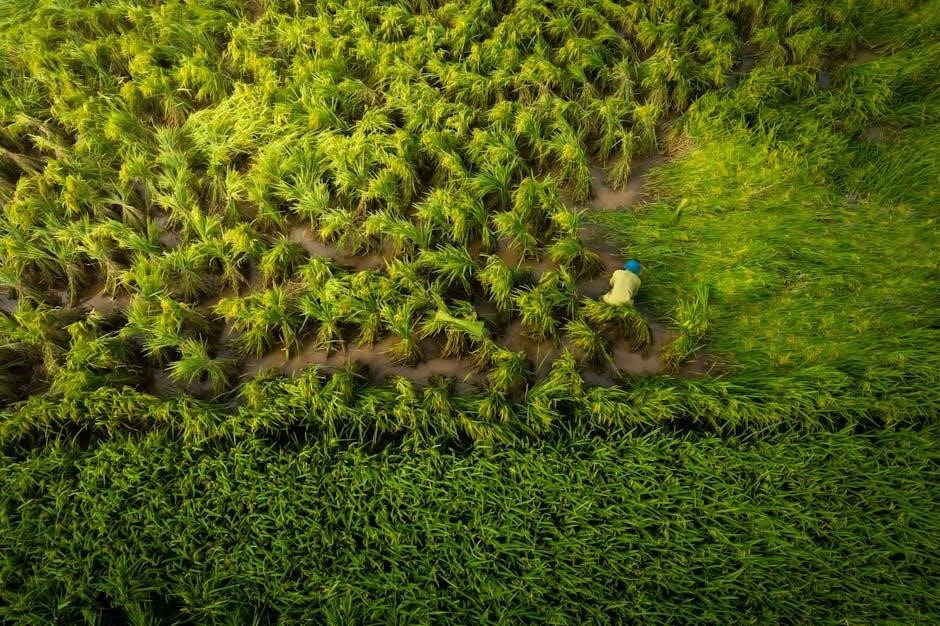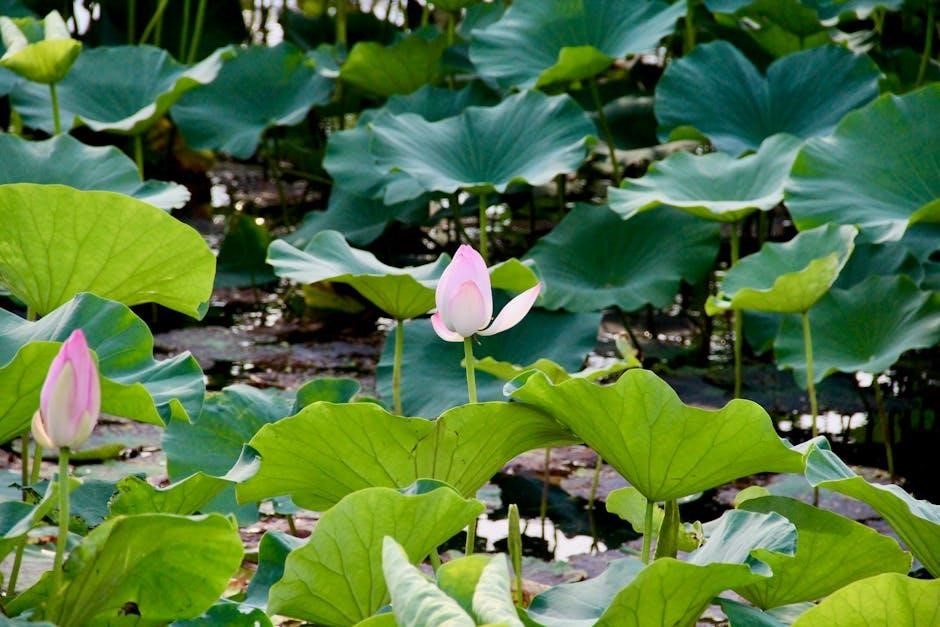
Crystal growing kits are interactive, educational tools designed to help users grow crystals at home. They typically include chemicals, instructions, and materials to create colorful crystals. These kits foster STEM learning and creativity for children aged 10 and above, requiring adult supervision to ensure safe and successful crystal formation.

What is Included in a Crystal Growing Kit?
A crystal growing kit typically includes a variety of materials to facilitate the crystal formation process. These components often consist of multiple bags of crystal-growing chemicals, such as citrine, emerald, and aquamarine powders, which determine the color and type of crystal. The kit may also contain a container or plastic dishes for holding the solution and crystals. Additional tools like a ridge in plastic or a water fill line are sometimes provided to guide the user. Instructions are always included, detailing step-by-step methods for preparing the solution, initiating growth, and harvesting crystals. Safety guidelines and precautions are also part of the package, emphasizing proper handling of chemicals and age recommendations. Some kits may include multiple experiments or variations for growing crystals of different shapes and sizes. Overall, the kit is designed to be a comprehensive, educational tool for both children and adults.

Importance of Following Instructions
Following the instructions provided with a crystal growing kit is crucial for achieving successful crystal formation. The guidelines outline essential steps such as preparing the solution correctly, ensuring the right environment for crystal growth, and safely handling chemicals. Deviating from these instructions can lead to failed experiments or unsafe conditions. Additionally, the instructions often include safety rules and first aid information, which are vital for protecting users, especially children. By adhering to the provided directions, users can ensure a fun and educational experience while fostering STEM learning. Properly following instructions also helps in understanding the scientific principles behind crystal growth, making the activity both enjoyable and informative. Neglecting these steps may result in disappointing outcomes or potential hazards, emphasizing the importance of careful adherence to the instructions. This ensures a rewarding and safe crystal-growing experience for all participants.

Understanding the Crystal Growing Process
The crystal growing process involves dissolving chemicals in water to form a saturated solution, which then cools and crystallizes around a nucleus, creating a visible crystal structure.
Preparing the solution is the first critical step in crystal growing. Begin by boiling water and gradually mixing in the provided crystal-growing chemicals until fully dissolved. Ensure no lumps remain for an even saturation. Allow the solution to cool slightly before pouring it into the growing container. Proper preparation ensures a clear, saturated solution essential for crystal formation. Always follow the kit’s instructions for precise measurements and safety guidelines. Avoid adding too much chemical, as this can hinder crystal growth. Once prepared, the solution is ready for the next step in the crystal-growing process. Patience is key, as the solution must cool and settle before initiating crystal growth. Initiating crystal growth involves creating a nucleus for crystals to form around. This is often done by suspending a seed crystal or a string in the prepared solution. Ensure the container is clean and dry to prevent contamination. Once the solution has cooled slightly, carefully place the seed crystal or string into it. Cover the container to maintain a stable environment and avoid dust particles. Crystals typically begin to form within a few days, depending on factors like temperature and humidity. It’s important to be patient and not disturb the setup during this critical period. Avoid moving the container excessively, as this can disrupt the crystal lattice formation. Regular observation can provide insights into the growth process, but interference should be minimized to allow natural development. This step requires careful attention to detail and adherence to the provided instructions for optimal results. Observing and harvesting crystals is an exciting part of the crystal-growing process. After several days, you’ll notice visible crystal growth on the seed or string. Use a magnifying glass to closely examine the crystals’ shapes and colors. Avoid disturbing the setup during this time, as it can disrupt the formation. Once the crystals have reached the desired size, carefully remove them from the solution using the provided tools. Rinse the crystals gently with clean water to remove any excess solution. Allow them to dry completely before handling or displaying. Harvesting your crystals is a rewarding step, showcasing the successful outcome of your patience and effort. Properly storing the crystals in a dry place will preserve their beauty for years to come. This hands-on experience provides a deeper understanding of crystal formation and its natural beauty.
Ensure a clean environment and maintain a stable temperature to promote crystal growth. Avoid disturbing the solution and follow instructions precisely for best results. Patience and consistency are key. Several factors significantly influence crystal formation, including temperature, humidity, and the purity of the solution. A stable temperature ensures consistent growth, while humidity affects evaporation rates, which can either speed up or slow down crystal development. Impurities in the solution can disrupt the crystalline structure, leading to irregular or malformed crystals. Additionally, the saturation level of the solution is critical; an overly saturated solution may result in rapid, uncontrolled growth, while an under-saturated solution may fail to produce crystals altogether. Proper preparation of the solution, as outlined in the crystal growing kit instructions, is essential to achieving optimal conditions. By carefully controlling these variables, users can encourage the growth of well-defined, visually striking crystals. Monitoring these factors and adjusting them as needed will enhance the overall success of the crystal-growing process. While growing crystals can be a rewarding experience, several common issues may arise. One frequent problem is the failure of crystals to form, which is often due to an improperly prepared solution or incorrect saturation levels. If crystals grow too quickly or in unwanted locations, it may indicate impurities or insufficiently controlled environmental conditions. Another issue is the formation of multiple small crystals instead of a single large one, which can be addressed by reducing the number of nucleation sites. Additionally, crystals may dissolve or break if the solution is disturbed or if the environment becomes unsuitable. To resolve these issues, users should carefully review the instructions provided in their crystal growing kit and ensure all steps are followed precisely. Patience and careful observation are key to overcoming these challenges and achieving successful crystal growth. Regular monitoring and adjustments can help mitigate many of these common problems. Always handle chemicals with care, avoiding skin and eye contact. Ensure proper ventilation and wash hands thoroughly after handling substances. Adult supervision is strongly recommended for children. When working with crystal growing kits, it’s crucial to handle chemicals safely to avoid potential hazards. Always read the instructions thoroughly before starting any experiment. Wear protective gear like gloves and goggles to prevent skin and eye irritation. Avoid breathing in dust from the chemicals, as this can cause respiratory issues. Ensure the workspace is well-ventilated, away from food or drink. Keep all substances out of reach of children and pets. If any chemical comes into contact with skin or eyes, rinse immediately with water and seek medical attention if irritation persists. Never mix chemicals not specified in the instructions, as this can lead to dangerous reactions. Properly dispose of any leftover materials according to the guidelines provided. Remember, safety should always be the top priority when conducting experiments with crystal growing kits. Crystal growing kits are generally designed for children aged 10 and above, as they involve handling chemicals and require a level of understanding and responsibility. Adult supervision is strongly recommended to ensure safety and proper execution of the experiments. Supervision helps children follow instructions accurately, handle materials safely, and avoid potential hazards. Adults can also assist with complex steps, such as preparing the solution or initiating crystal growth, making the experience both educational and enjoyable. Additionally, supervision ensures that children adhere to safety guidelines, such as wearing protective gear and keeping chemicals away from food or drink. By involving adults, the crystal-growing process becomes a collaborative learning opportunity, fostering STEM knowledge and creativity while maintaining a safe environment. Proper supervision is key to a successful and enriching crystal-growing experience.Preparing the Solution
Initiating Crystal Growth

Observing and Harvesting Crystals

Tips for Optimal Crystal Growth

Key Factors Influencing Crystal Formation
Troubleshooting Common Issues

Safety Guidelines and Precautions

Handling Chemicals Safely

Recommended Age and Supervision